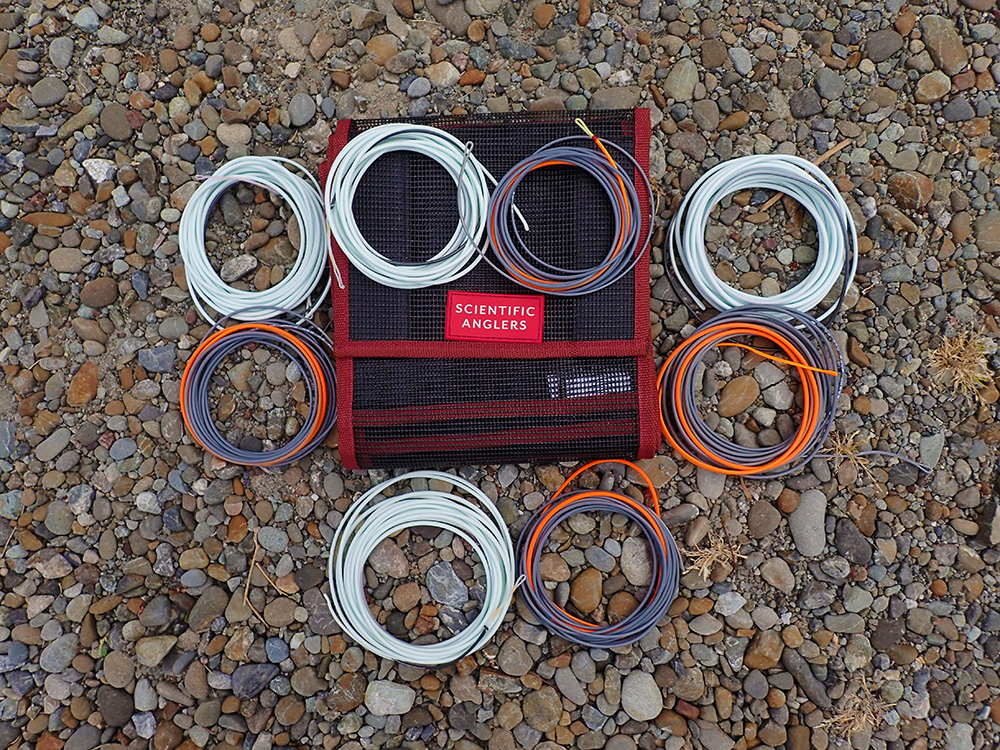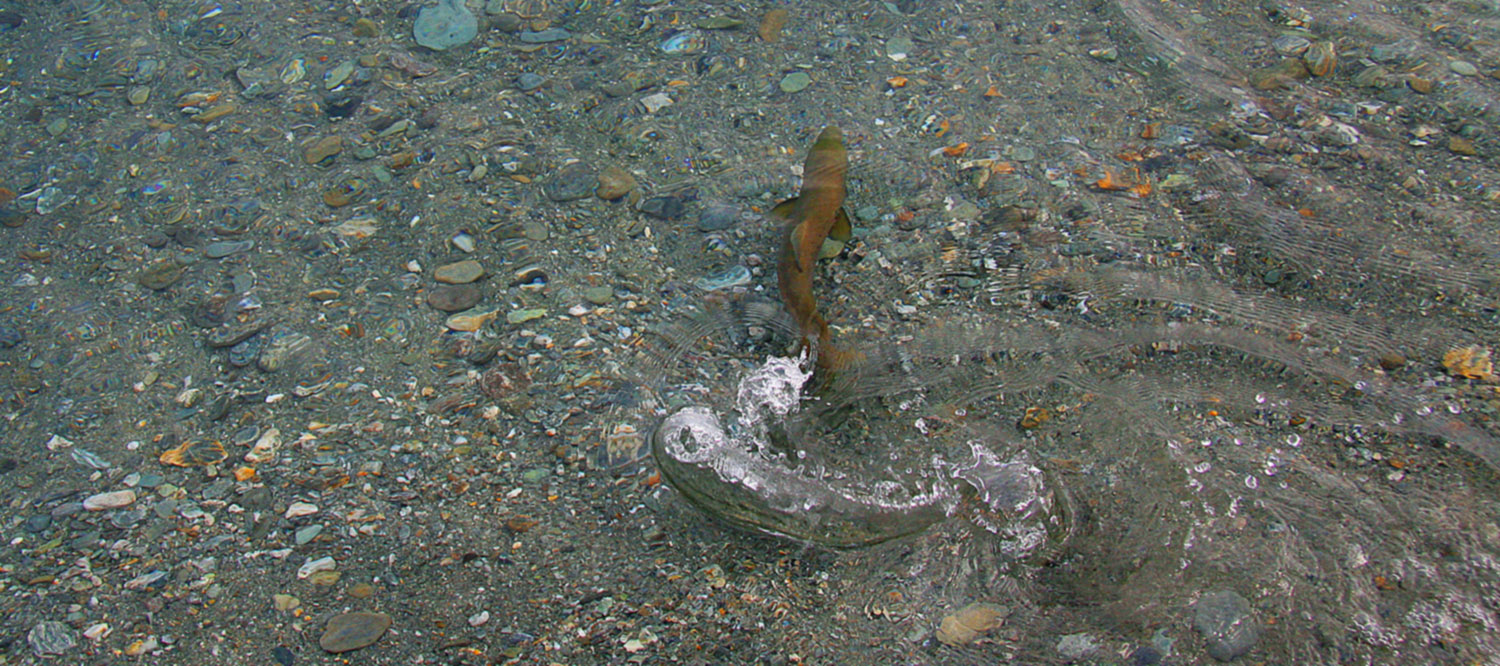Scientific Anglers Skagit Lite Series - Long Term Review
I am crazy about Spey casting for trout, and most days it’s a Skagit head that does the job.
When it comes to Skagit heads for single-hand and two-handed rods for trout, nowadays we are spoilt for choice - with micro-Skagit offerings from all leading fly-line brands.

Micro-Skagit heads range from 11 ft to 16 foot long and most have a rear taper, a level belly and then a front taper that varies from close to zero to a third the length of the head.
The Scientific Anglers Skagit Lite series is different in that the belly is tapered, producing a compound front taper around 70-80% of the total head length. The taper is gradual for the most part but becomes more acute over the last foot or so. Official profile diagrams don’t give much away.
In lighter grain weights (<270 grains) the Skagit Lite heads are also shorter than the competition. All sizes are available in both floating and intermediate, and in integrated or head-only versions.
I have fished head-only floating and intermediate Skagit Lite lines extensively over the last year and a half, in 150 to 300 grains, and this review is based on my experience with single and double handed rods.
For running lines I like 25 lb SA Flat Mono for the 150 grain heads, 35 lb OPST Lazar line for 180 and 210 grain heads, and 35 lb SA Flat Mono for 240, 270 and 300 grain heads.
Single Hand Rods
I favour 9 - 9.5 ft 5wt single hand rods for Spey casting on small to medium rivers, because armed with a short Skagit head and assisted by a haul I can cast heavier tips and streamers than with a 1 or 2 wt light double hander.
The single-hand outfit is also more accurate and better suited to stripping streamers, rather than just fishing them on the swing.
Floating heads
Skagit Lite heads in 150 to 210 grain are 11 to 12 foot long, which happens to be the perfect length for casting 9 -10 ft sink tips on 9-9.5 ft single handed rods.
In my experience the length of the head plus the tip should ideally be around 2.1 - 2.4 times the length of the rod, for casting genuine sink tips, i.e. not coated leaders.
Being comparatively short, the 150 - 210 grain Skagit Lite heads have the grains per foot to handle the weight of sink tips often required to get down on New Zealand rivers - see Sink Tip pairings below
Skagit Lite Heads in 150 - 210 grains are therefore able to cast longer and heavier tips than 14 or 15 foot heads of equivalent weight.
The unique delta profile of the Skagit Lite heads result in surprising distance and presentation for 11-12 ft heads, when paired with mono running lines.
This profile, with rear weight distribution, excels at all forms of Spey casting, and means one can go 20 grains lighter than with heads with long level bellies, without sacrificing rod load or lifting power, e.g. 180 instead of 200 gain head on a standard 9 ft 5wt.
For detailed comparisons of Skagit Lite heads with other micro-Skagit heads on the market (in 2020) for use on single hand rods, the reader is referred to my article ‘Single Hand Skagit: Science behind the magic’, particularly the pages entitled: ‘Head design’ and ‘Casting notes of the 12 floating Skagit heads I tested’.
Intermediate Heads
Floating Skagit heads are great for fishing flies near to the surface, working around structure, and dropping flies into buckets and slots and then lifting them out on the swing. But when it comes to streamers on rivers with deep runs and pools, intermediate heads are often much more effective.
Scientific Anglers released the first intermediate micro-Skagit head in 2019, as an extension of the Skagit Lite series.
The Skagit Lite intermediate heads have the same lengths and winning profiles as the floating heads, but they are thinner and sink at 1.5 inches per second. Like the floating heads, they excel at overhead and sustained anchor and touch and go Spey casts.
The intermediate heads are less impacted by wind than the floating versions, and they allow the angler to achieve greater depth - important factors when using lighter head systems designed for trout. They also make less splash, so presentation is excellent.
Being heron grey, the intermediate heads are unobtrusive beneath the water, although the short fluorescent orange butt section is easily visible to the angler, both in low light and water with colour, which greatly assists with line management and casting.
In lighter grain weights (<240 grains) I find the intermediate heads do not cast the weight of sink tips the floating versions do, but nevertheless achieve greater depth with lighter tips.
On single hand rods I use the same grain weights for intermediate heads as I do for for the floating version. Switching between floating and intermediate versions is dead easy.
Skagit Lite sink tip pairings for single-hand rods
Rod pairings and tips that have worked exceptionally well for me are as follows :
Skagit Lite 150 (11 ft) :
A 9 ft presentation 5wt - e.g. Loomis NRX LP - with hover and intermediate 10 ft Sonar leaders for fishing near to the surface and S6 Sonar leader or S6 #5 Rio Replacement Tip for going deeper.
Although both are S6, the Replacement Tip sinks a little quicker because it is density compensated through the taper, so the tip sinks at the same rate as the butt - which is not the case with coated leaders.
Ten foot SA Sonar leaders weigh 50 grains, regardless of sink rate, they have breaking strains of 25 lb, and because they are stiffer than other brands of coated leader, they make better-casting tips for light Skagit heads.
Casting is effortless with the above combinations, presentation is exceptional, and the combo will easily cast streamers up to size 6 with 4mm brass bead. It is also delicate enough for soft hackles.
The S6 Sonar leader is around 10 grains lighter than the #5 S6 Replacement Tip, which are usually close to 60 grains, and is a great match for the 150 grain Intermediate head.
Skagit Lite 180 (11 ft) :
Standard 9 - 9.5 ft 5wt rod (9 ft TFO professional and Sage X 597) with #6 Rio Replacement tips for medium streamers and a T-7 Airflo Flo Tip or 9 ft of T-8 or T-11 for casting heavier stuff on the floating head.
A #6 S6 Replacement Tip is all I seem to use on the intermediate head, whether I am fishing streamers on larger rivers, or looking for sea trout or kahawai in estuaries and river mouths.
Skagit Lite 210 (12 ft) :
A powerful 5wt or medium fast 6 wt 9-9.5 ft rod with Airflo T-7 and T-10 Flo Tips for the floating head.
I have not fished the Intermediate 210, but expect that a #6 Replacement Tip or 9 ft of T-8 would go well.
Skagit Lite 240 (13 ft) :
A 9.5 ft medium fast 7 wt (e.g. Loomis classic GLX) with T-7 to T-14 Airflo Flo tips for the floating head.
The intermediate head fishes extremely well with a Rio 3-D light MOW tip with S5/S6/S7 configuration with the 9.5 ft rod, and will easily handle 9 ft of T-8 or T-11 on a 9 ft rod.
This is a great single hand outfit for the Tongariro River in winter.
Double Handed Rods
All of my double-handed fishing and head testing has been done with an 11.3 ft 4wt Sage Trout Spey HD rod, which in my hands likes a 300 grain floating head.
My favourite Skagit heads for the 4wt Trout Spey HD are, hands down, the 14 ft 270 and 15.5 ft 300 grain Skagit Lite intermediate heads.
Since the 270 and 300 grain heads have similar grains per foot they have similar lifting power, and both heads are easily able to cast 10 ft of T-11, when required. The shorter head requiring a slightly slower and more compact casting stroke.
In general, I prefer the shorter head for smaller rivers and close quarter work, as I can fish or strip closer, and it is little less prone to blowing anchors when using small flies and lighter sink tips.
The longer head is my first choice for larger rivers because it gives me extra distance. The extra length also makes it a little easier to cast off my left shoulder (without blowing my anchor). The shorter head is, nevertheless, a good option when wading deep, as it compensates for the loss in effective rod length.
A 270 or 300 grain Skagit Lite intermediate head and a 10 ft 110 grain (T-11) OPST bucket tip, which has a sink rate of 8/9 ips, has been my most effective Skagit head system for the Tongariro in winter, and any time when flow rate is up. There have been many sessions when this combination has produced fish when floating Skagit heads have failed.
Similarly, an intermediate Skagit Lite 270 and 6/7 ips tip is usually more successful than a floating head in deeper runs and pools on other medium to large rivers, e.g. the Manawatu River. The Rio light S5/S6/S7 3-D MOW and #6 S6 Replacement Tips are great choices for larger and smaller flies, respectively.
Floating heads are, of course, better suited to some pieces of water, and with a separate running line it is easy to switch between heads. The 15.5 ft Skagit Lite 300 is perhaps the smoothest casting floating Skagit head I have tried on my 4wt Trout Spey, especially with 10 ft T-8 tips.
Although this head easily handles 10 ft of T-11, a 15.5 foot 300 grain Airflo Scout is a bit better with the heavier stuff, especially in the wind. The Scout has lower diameter and seems to be made from a more dense material, so moves more quickly through the air.
Conclusion
The 150 to 240 grain Skagit Lite floating heads are without doubt the best general purpose Skagit heads out there for use on 9-9.5 ft single hand rods in 4wt to 7 wt - a function of ideal head length (11-13 ft ) and perfect profile for this purpose.
The 15.5 ft 300 grain floating head is a great length and weight for my 11.25 ft Sage Trout Spey HD 4wt double hander, and the unique taper made it the smoothest casting Skagit head I have yet to try on this rod, particularly with lighter sink tips, i.e 10 ft of T-8.
I cannot write highly enough about Skagit Lite intermediate heads - I use them most of the time when fishing streamers on single hand and double-handed rods, regardless of season.
Intermediate heads are much more effective than floating heads in a number of situations, including: deeper runs and pools on medium to large rivers, estuarine channels, river mouths on lakes, and any time the wind is blowing.
Skagit Lite heads in intermediate and floating, together with a handful of sink tips, enable me to cover an incredibly wide range of fishing conditions with each of my single hand and double-handed outfits.
As length and profile are the same, switching between floating and intermediate Skagit Lite heads on a particular outfit is dead easy.
And the clear and durable printed grain weight towards the tip of each Skagit Lite head is greatly appreciated when grabbing a desired head from my wallet.
See other reviews :
